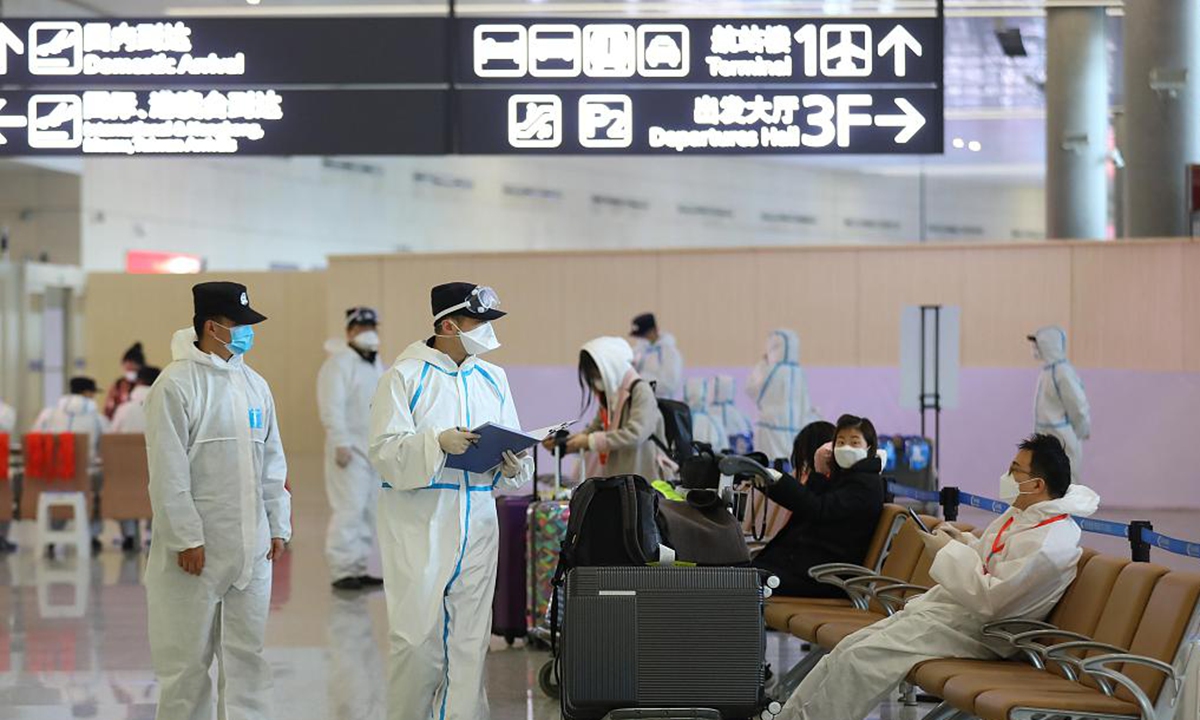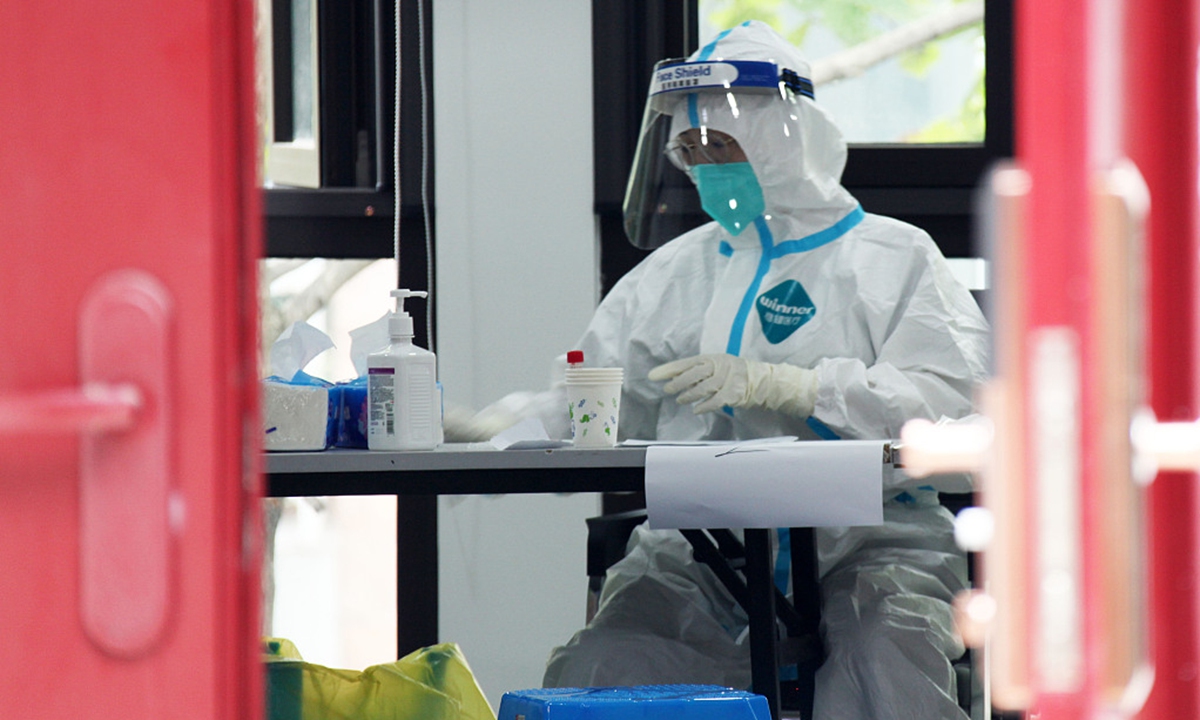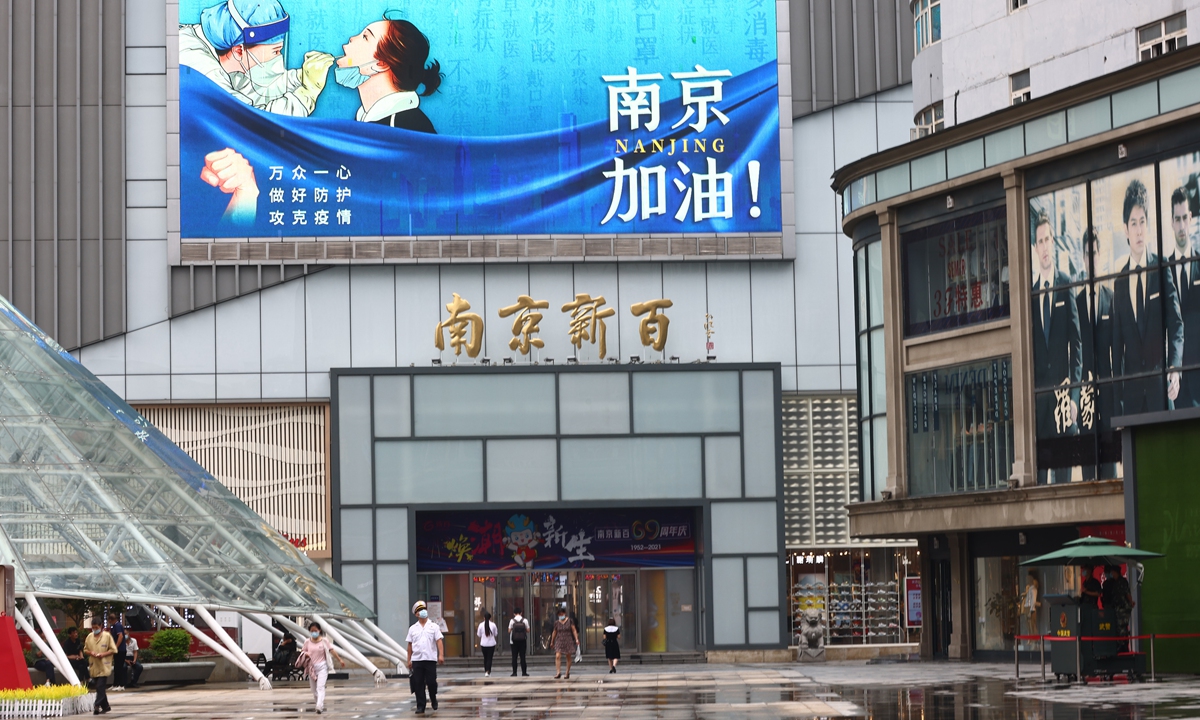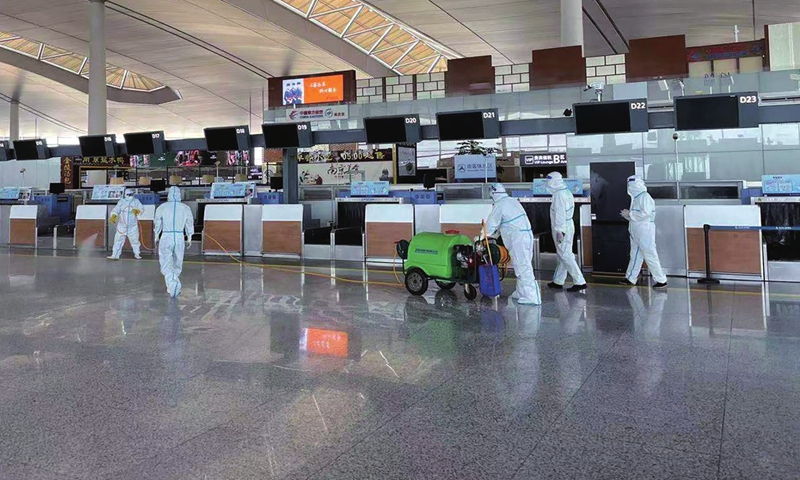By Global Times Published: Jul 30, 2021

Photo: VCG
A flight from Russia was identified as the source of the latest round of the COVID-19 infections in Nanjing, East China's Jiangsu Province, the Nanjing health authority said on Friday. Airport cleaning staff members were infected when cleaning the cabin.
The city found the genetic sequences of the cleaners at Nanjing Lukou International Airport, who were reported as confirmed cases at the beginning of the outbreak, are consistent with those of imported cases on the flight CA910, which arrived in Nanjing on July 10 from Russia, local authority said.
Flight CA910 has been suspended 10 times for carrying passengers who tested positive for COVID-19, since China introduced "circuit breaker" measures for inbound air flights in June 2020, media reported. In July alone, it was suspended for three times.
In its 10 flights that triggered a "circuit breaker," CA910 has transported a total of 69 COVID-19 patients from Moscow to Chinese cities including Nanjing, Tianjin and Zhengzhou, China Youth Daily reported on Friday.
Cleaning staff most likely contracted the virus after not strictly adhering to personal protection requirements while completing a deep clean of flight CA910, said Nanjing Center for Disease Control and Prevention (Nanjing CDC) at a press release on Friday.

Photo: VCGInvestigations found the cleaners were responsible for garbage removal for both domestic and international flights, Nanjing CDC said. The other cases at the airport were infected by contacting with the cleaners, or by being exposed to the contaminated environment, it added.
Nanjing CDC has completed sequencing work of the virus genes of 52 cases in the outbreak, all of which are of Delta strain, said Ding Jie, the CDC's deputy director.
"The gene sequences of these viruses are highly homologous, suggesting they are from the same transmission chain," Ding added.
Nanjing authorities have identified13 local COVID-19 patients on Thursday. The city has reported a total of 184 confirmed cases and one silent carrier since the latest outbreak on July 20.
Global Times
Nanjing outbreak spreads to 5 provinces and Beijing; most extensive contagion after Wuhan
By GT staff reporter sPublished: Jul 29, 2021

A billboard outside a shopping mall reads "Nanjing, stand strong" on Wednesday as the city in East China's Jiangsu Province is fighting a fresh COVID-19 resurgence, which had infected 159 in the province and spread to at least 10 cities in five provinces (See story on Page 4). Photo: cnsphoto
A new surge of COVID-19 cases starting from an airport of Nanjing, capital city of East China's Jiangsu Province, has spread to five other provinces and Beijing municipality, the most extensive domestic contagion after Wuhan.
Since the first confirmed case of the latest outbreak was detected on July 20 at Nanjing Lukou International Airport, nearly 200 infections have been reported as of Thursday morning. Compared to previous rounds of domestic virus resurgences that were usually limited to one city or a few nearby cities, the Nanjing epidemic occurred at a busy international airport, and trans-regional passengers traveling for long distance soon brought the virus across the country to places including Southwest China's Sichuan and Northeast China's Liaoning, experts noted.
Zhangjiajie, a popular tourist site in Hunan Province and the shooting location of the James Cameron's blockbuster Avatar, is believed to be another key node on the infection chain. Four infected cases who had been to the Lukou airport were found watching a cultural performance with more than 2,000 people in Zhangjiajie on July 22. Beijing reported two confirmed cases who returned from Zhangjiajie on Thursday.
The highly transmissible Delta variant strain also led to the quick spread of the virus nationwide, Wang Guangfa, a respiratory expert at Peking University First Hospital, told the Global Times on Thursday.
The unexpected and extensive contagion starting from Nanjing has a strong psychological impact on the public, many of whom have loosened daily protective efforts or are planning their summer vacations, but have to cancel them.
"It's time for us to detect possible loopholes in our epidemic prevention and control efforts," Wang said, noting even cities that haven't found Nanjing-related infections should stay alert.
Many cities across China have ramped up screening for close contacts and identify residents who have been to Nanjing or other cities where confirmed cases have been found and tightened prevention work. For example, authorities in Handan, North China's Hebei Province, and Hulun Buir in North China's Inner Mongolia have also released epidemiological investigation results of some close contacts of cases confirmed in Nanjing.

Staff members carry out sterilization work at the Terminal 2 of Nanjing Lukou International Airport in Nanjing, East China's Jiangsu Province on Wednesday after 17 airport workers tested positive for the COVID-19. Photo: Xinhua
Raising the alarm
The new surge in Nanjing as well as the flare-up in Southwest China's Yunnan Province shared similarities as they were all related to imported cases, which raised the alarm that anti-epidemic work must avoid a lax attitude and management needs to be further strengthened in airports, entry and exit ports and transportation hubs, experts warned.
Nanjing has been comparatively slow in taking action, but fortunately the city is still in the early stage of the outbreak, Chen Xi, an assistant professor of public health at Yale University, told the Global Times.
The surge in Nanjing would last longer than the outbreak outside the city, but accelerated screening and epidemiological investigation will help curb virus transmission, Chen said.
The current outbreak in Nanjing is a small one caused by imported cases in the area, which is not on the same level as the pandemic in other countries. The outbreak was detected at an early stage and the measures taken were strong. It is believed that the epidemic will be under control in a short time, Shao Yiming, a leading physician and immunologist from the Chinese Center for Disease Control and Prevention, said at an interview during the launch of the Report on the Global Use of COVID-19 Vaccines with Global Times on Thursday.
Experts reached by the Global Times said that the epidemic is still controllable since confirmed cases in other provinces are linked to the source of the outbreak in Nanjing Lukou International Airport.
Always staying vigilant against virus spread is one of the biggest lessons that people can learn from the latest outbreak in Nanjing, said Zhou Zijun, a professor at Peking University's School of Public Health.
Preventing and controlling the virus with strict measures is routine, especially for those who work at international transport hubs like the Nanjing Lukou airport, where the imported COVID-19 cases were found, Zhou said.
"Quarantine and regular nucleic acid tests are still necessary, as some people who have been vaccinated only have mild symptoms after being infected, that they don't realize the symptoms in time, or don't take them seriously," Zhou told the Global Times on Thursday.
Facing the current resurgence of the virus, Zhou said the public may need to get a booster shot. "But we should wait for the result of its phase III clinical trials for booster shot takers, to see how effective that will be to us," he added.
Medical experts previously told the media that most of the cases in Nanjing had been vaccinated. However, the local authority revealed that seven of the cases in Nanjing had been classified as critical, which raised concerns among netizens over the efficacy of vaccines.
Zhuang Shilihe, a Guangzhou-based expert, told the Global Times that it is still not clear whether these people had been vaccinated, and previous research had proven that vaccines were still the best method of preventing critical cases.
Shao said that the existing vaccines are still effective for all the variants, while it's protective efficiency to prevent the infection of virus variants may be lower. But there is no big gap on the protection efficiency for severe cases and deaths caused by the coronavirus and its variants.
No comments:
Post a Comment